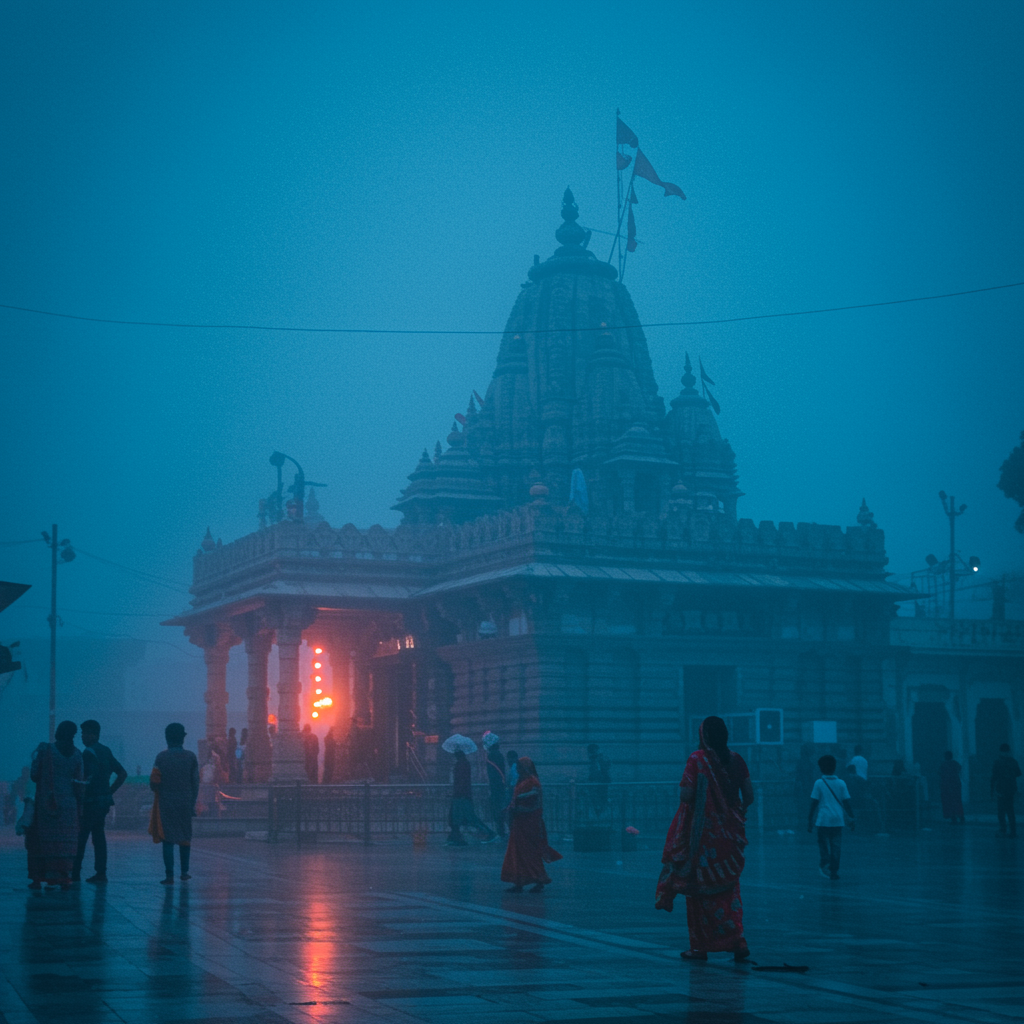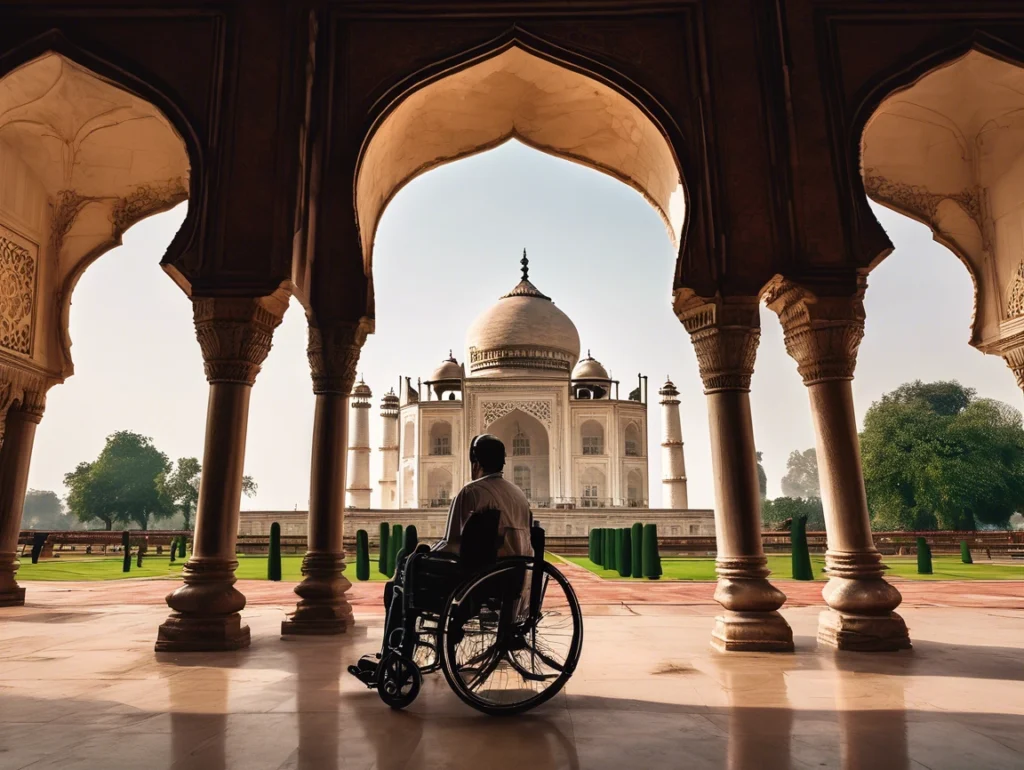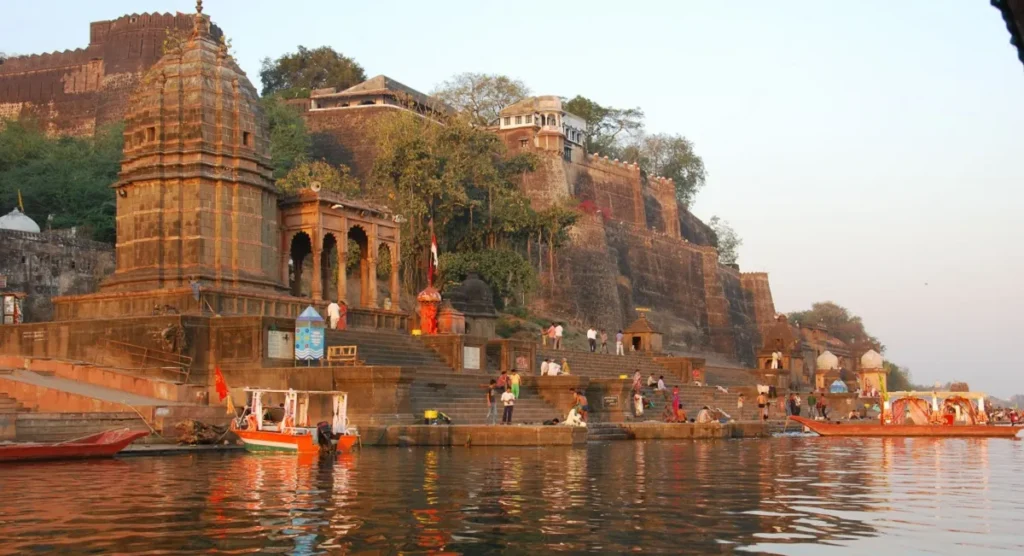Wheelchair Accessibility in Ayodhya: My Personal Experience as a Muscular Dystrophy Patient
AI Generated Image By Anushika SinghalLiving with Muscular Dystrophy for 10 years Visiting Ayodhya, the holy city of Shri Ram, was always a dream for me. Living with Muscular Dystrophy for the past 10 years has made walking fast, climbing stairs, and standing for long hours a real challenge. However, to my pleasant surprise, thanks to the excellent wheelchair accessibility in Ayodhya, especially at the newly built Ram Mandir, my dream visit became a comfortable realityHere’s my detailed experience, hoping it helps others with mobility challenges too. Wheelchair Accessibility in Ayodhya: Parking and Transportation We parked our private vehicle at the Arundhati Bhawan Multi-Level Parking, which is located a short distance from Ram Mandir.This parking facility is well-equipped for wheelchair users, offering: A lift (elevator) for easy movement between floors. Proper ramps for smooth wheelchair access. Sufficient space for easy maneuvering. From there, E-rickshaws are readily available to take you closer to the Ram Mandir entrance — a huge relief because walking even short distances in crowds can be exhausting when you have Muscular Dystrophy. Reaching Ram Mandir: Renting a Wheelchair At the entrance of Ram Mandir, on the left side, the Ram Mandir Trust provides wheelchair rental services.You can also request a puller, someone who will assist you in pushing the wheelchair if needed — which was a great help for me. Wheelchair rental price: Only Rs. 200, which is very reasonable. Tip: No need to bring your own wheelchair if you don’t want to — the temple management has made sure to arrange everything comfortably. Sugam Darshan Pass for Ram Mandir: A Blessing for Mobility Challenges For an even smoother experience, I highly recommend applying for the Sugam Darshan Pass.You can get it from the official website: https://online.srjbtkshetra.org/#/login Important: Apply at least 15 days before your planned darshan date. This special pass provides: Separate, faster entry lanes for wheelchair users and elderly. Less crowd pressure — so you don’t have to struggle in long queues. It made my visit much more peaceful and hassle-free. Ram Mandir Wheelchair Facilities: Full Access to Sanctum The best part? Ram Mandir is fully accessible by wheelchair!Here’s what impressed me the most: Well-designed ramps all the way till the sanctum (Garbhagriha). No need to leave your wheelchair at any point during darshan. Smooth flooring to prevent any wheelchair jerks or obstacles. For someone like me, who struggles with steps and standing, this thoughtful infrastructure was truly heartwarming. I could perform darshan without stress, anxiety, or physical strain. Important Note: Hanuman Garhi Temple is Not Accessible While Ram Mandir is excellent for wheelchair users, Hanuman Garhi Temple unfortunately isn’t. It has a long, steep flight of stairs. No ramps or lifts are available. Not recommended for people with severe mobility challenges. I personally skipped Hanuman Garhi because climbing those many stairs would have been impossible for me. Visiting the New Saryu Ghat After visiting Ram Mandir, we also went to the new Saryu Ghat — another beautiful spot that is also wheelchair accessible! Low-floor Golf Carts are available from Ram Mandir to Saryu Ghat. The Ghat area has ramps and smooth pathways for easy wheelchair movement. It’s a peaceful place to sit by the river and soak in the divine atmosphere. FAQs About Wheelchair Accessibility in Ayodhya 1. Where can I park my private vehicle near Ram Mandir? You can park at the Arundhati Bhawan Multi-Level Parking, which has lifts, ramps, and is wheelchair-friendly. From there, E-rickshaws are available to reach Ram Mandir easily. 2. Is wheelchair rental available at Ram Mandir? Yes, wheelchairs and pullers are available for rent at the left side of the Ram Mandir entrance, provided by the Ram Mandir Trust. Rental cost: Only Rs. 200, which is very affordable. 3. How can I make my darshan easier if I have mobility issues? Apply for the Sugam Darshan Pass from Shri Ram Janmbhoomi Teerth Kshetra’s official website at least 15 days prior to your darshan date. This allows you faster entry through a separate lane. 4. Is Ram Mandir fully accessible by wheelchair? Yes, Ram Mandir has ramps up to the sanctum and smooth pathways throughout. You do not need to leave your wheelchair at any point inside the temple. 5. Can disabled visitors go to Hanuman Garhi Temple? Unfortunately, Hanuman Garhi Temple is not wheelchair accessible due to long, steep stairs and no lift or ramp facility. 6. Is Saryu Ghat wheelchair accessible? Yes! The new Saryu Ghat is wheelchair-friendly. Low-floor golf carts are available from Ram Mandir to Saryu Ghat for easy transportation. 7. Do I need to bring my own wheelchair? Not necessary. You can rent a wheelchair at the Ram Mandir entrance for just Rs. 200, but if you feel more comfortable with your personal wheelchair, you can bring it too.




